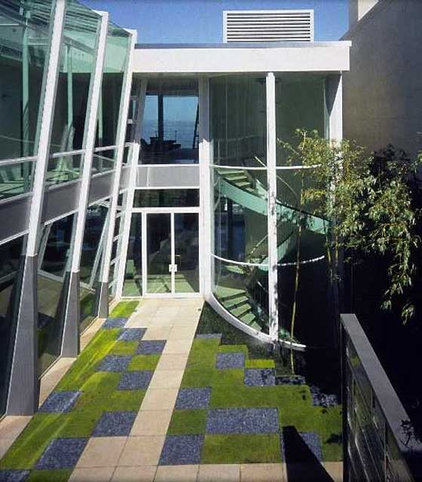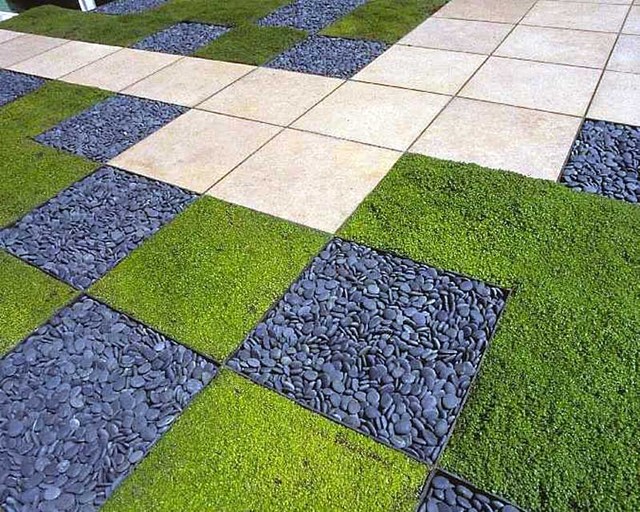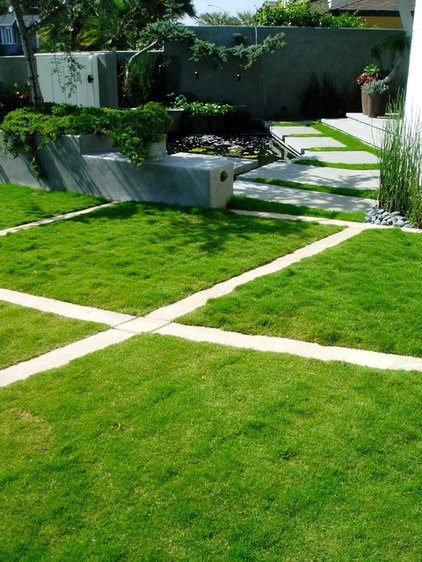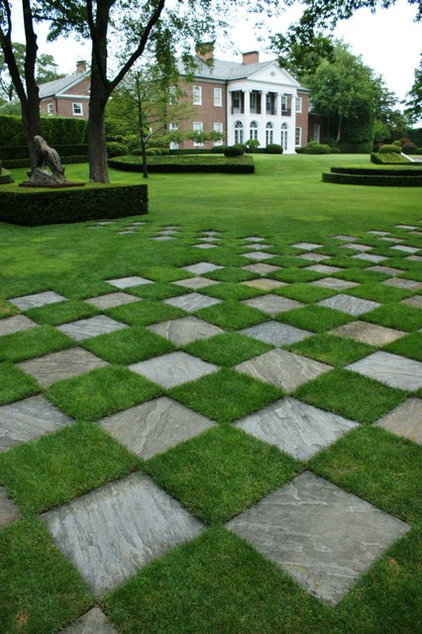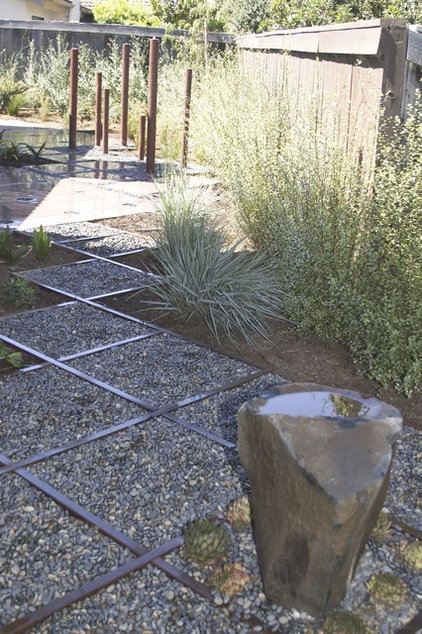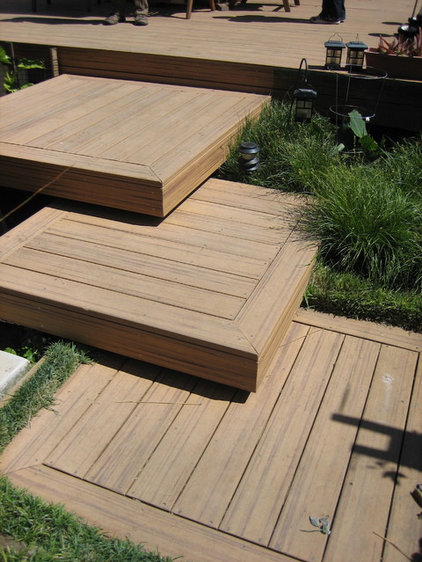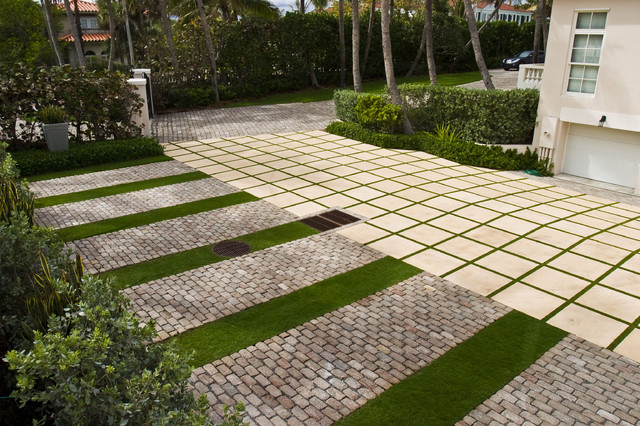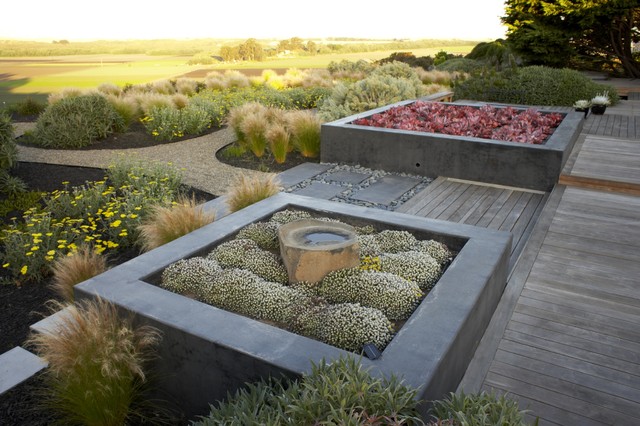Create a Landscape That Really Squares Up
Create a Landscape That Really Squares Up
See all the ways squares can be the building blocks of eye-catching garden design
The most obvious use of the square in gardens may be in the hardscaping: pavers and raised beds. But if we look more closely, we can see how squares are used for other garden features, in a wide variety of materials and even as design solutions.
In contemporary gardens it can be important to reflect the style of adjacent buildings. It is here where geometric shapes, such as squares, can come into play.
This highly geometric building is complemented by its checkerboard garden. The angular lines in the windows and metalwork are echoed in the long, paved walkway and alternating squares of baby's tears (Soleirolia soleirolii) and pebbles.
|
A closer look at the design shows
how the effect has been achieved. The paving, planting and pebbles in a
seemingly random pattern are much like the abstract style of
20th-century artist Piet Mondrian.
To keep the squares crisp, metal or wood edging prevents the greenery from encroaching on the paving and keeps pebbles in place. |
Squares, above all, are satisfying in their basic simplicity and symmetry. Carefully spaced, clean, light-colored square pavers create a serviceable pathway and also make this area seem larger. The path also works by leading the eye along to features in the garden that are farther away.
|
This contemporary seating area,
composed of tightly jointed cast concrete slabs, once again employs the
trick that large, uniform pavers can make a space feel larger.
|
Though these square pavers have been laid in regular lines, the eyes are tricked at certain viewpoints by the tilting of the squares. This tilting also creates sight lines leading to the house in the distance.
Tip: The paving is set just below the level of the grass to make the grass easier to mow straight over.
Wide dividing strips between the gravel serve not only to separate the squares and control the gravel, but to accentuate the geometry of the squares.
|
Create Visual Delight With Patterns
Sometimes squares can be used just for the delight of the patterns they can make. Here buff-colored pavers separated by strips of turf make a practical yet stunning statement in this front garden. |
|
The repetition created by using
squares within squares can be very pleasing to the eye. The wide edging
of these beds accentuates the square and frames the formal, almost
architectural, plantings within.
The strength and simplicity of the square appears perfect when it is used as a planter or raised bed, where it balances the loose plantings beyond. |

